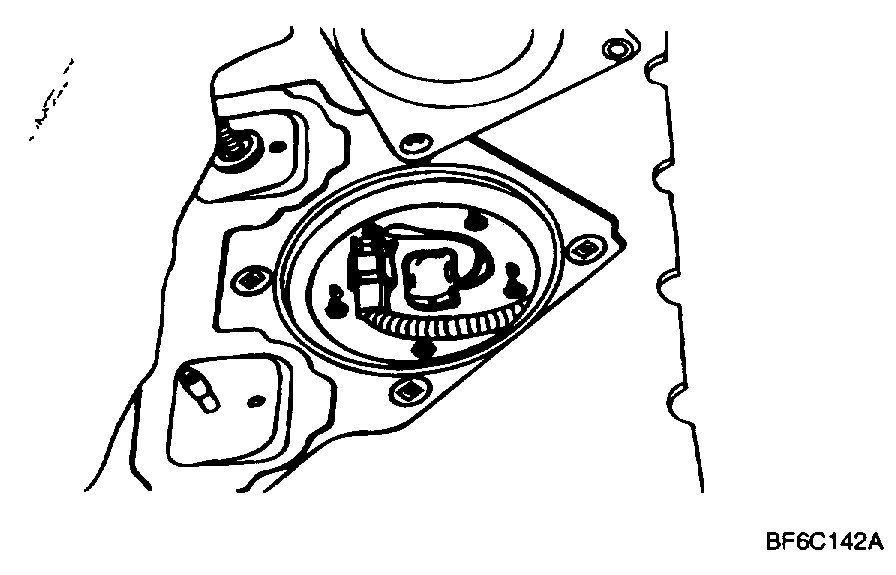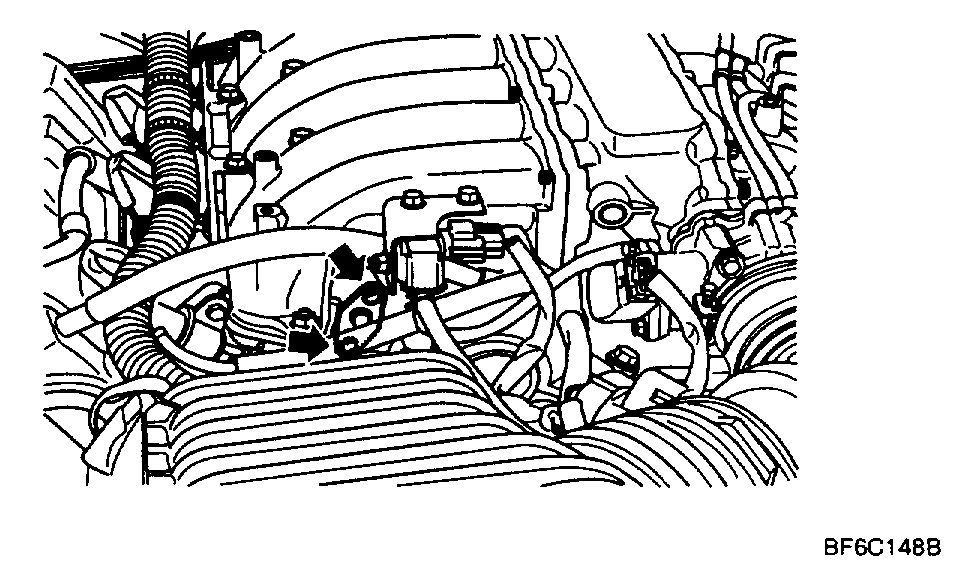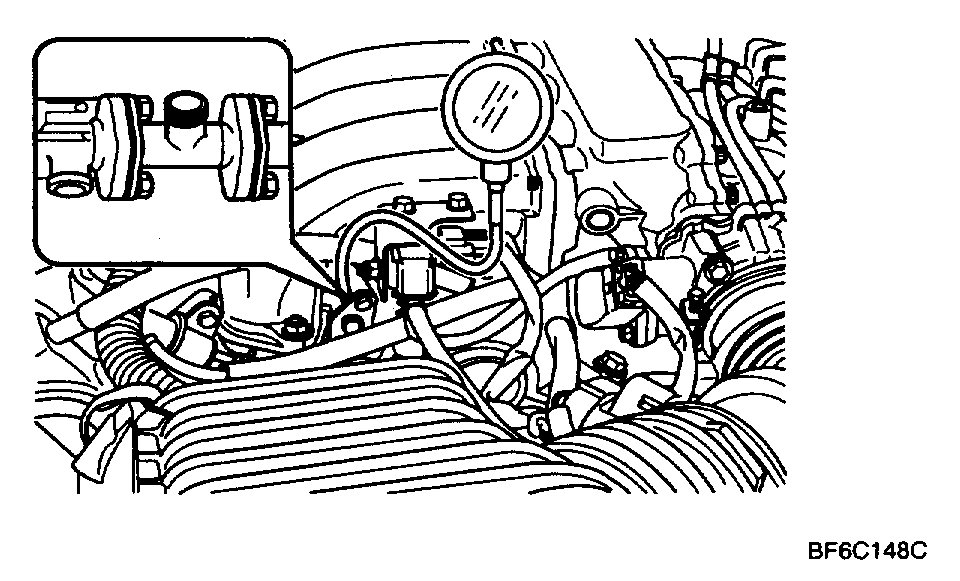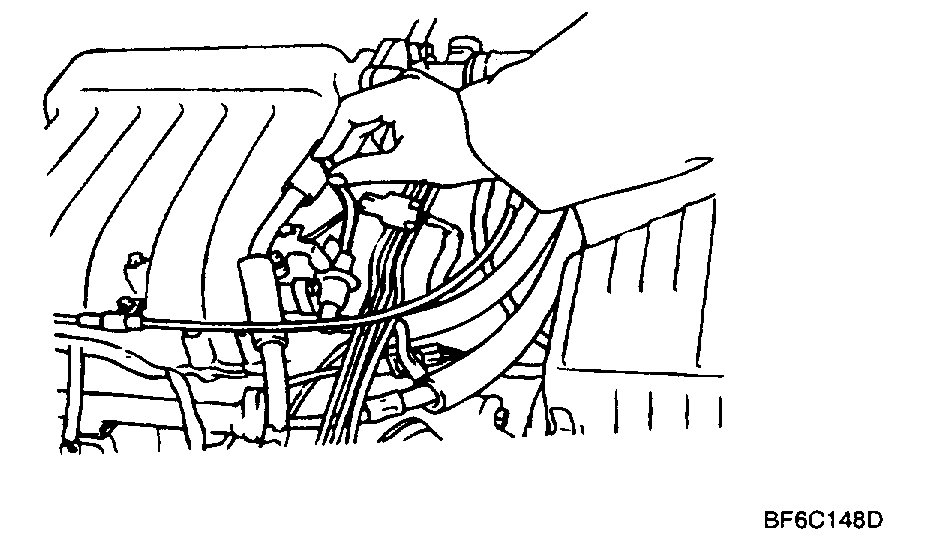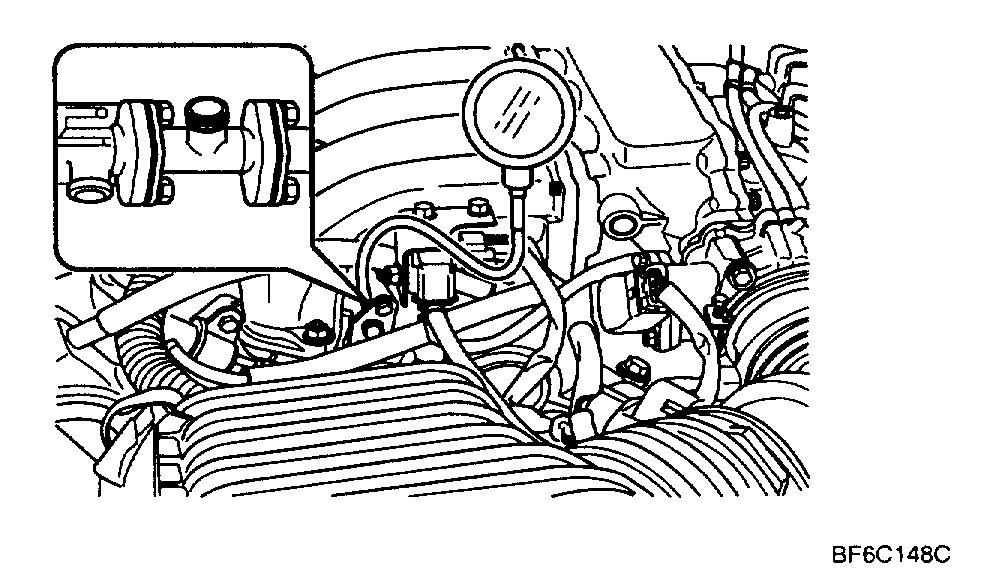Hi and thanks for using 2CarPros.com.
The first thing I would suggest checking is the fuel pressure. Low pressure can cause this type of an issue. Here are general directions for checking pressure:
https://www.2carpros.com/articles/how-to-check-fuel-system-pressure-and-regulator
Here are the specific directions for your vehicle. All attached pictures correlate with these directions.
__________________________________
COMPONENT TESTS AND GENERAL DIAGNOSTICS
1. Reduce the internal pressure of the fuel pipes and hoses by the following procedures.
Disconnect the fuel pump harness connector in the rear seat side.
Start the engine and, after it stops by itself, turn the ignition switch to the OFF position.
Disconnect the battery negative (-) terminal. Connect the fuel pump harness connector.
2. Disconnect the fuel high pressure hose at the fuel line side.
CAUTION: Cover the pipe connection with a shop towel to prevent splashing of fuel caused by residual pressure in the fuel line.
3. Using the Fuel Pressure Gauge Adapter, install the fuel-pressure gauge to the fuel high pressure hose.
Fuel Pressure Gauge Adapter - P/N 09353-3800
4. Connect the battery's negative (-) terminal.
5. Apply battery voltage to the fuel pump drive terminal, activate the fuel pump; then, with fuel pressure applied, check that there is no fuel leakage from the pressure gauge or connection part.
6. Disconnect the vacuum hose from the pressure regulator and plug the hose end. Measure the fuel pressure at idle.
Standard value: 320 - 340 kPa (3.26 - 3.47 kg/sq.cm, 46 - 49 psi)
7. Measure the fuel pressure when the vacuum hose is connected to the pressure regulator (while engine is running).
Standard value: Approx. 270 kPa (2.75 kg/sq.cm, 39 psi)
Condition/Probable Cause
8. If the results of the measurements made in steps (6) and (7) are not within the standard value, use the table to determine the probable cause, and make the necessary repairs.
9. Stop the engine and check for a change in the fuel pressure gauge reading, which should hold for approximately 5 minutes. If the gauge indication drops, observe the rate of drop. Determine and remove the causes according to the table.
10. Reduce the fuel pressure in the fuel line.
11. Disconnect the high pressure hose and remove the fuel pressure gauge.
CAUTION: Cover the pipe connection with a shop towel to prevent splashing of fuel caused by residual pressure in the fuel line.
12. Install a new O-ring at the groove in the end of the high-pressure hose.
13. Connect the high pressure fuel hose to the delivery pipe, and tighten the screws to the specified torque.
Tightening torque
High pressure fuel hose to delivery pipe:
3 - 4 Nm 30 - 40 kg.cm, 2.2 - 3 lb.ft
14. Check for fuel leaks.
Apply battery voltage to the fuel pump drive terminal to operate the fuel pump.
With pressure, check the fuel line for leaks.
___________________________________
Let me know if this helps or if you have other questions.
Take care,
Joe
Images (Click to make bigger)
Thursday, September 6th, 2018 AT 6:36 PM
